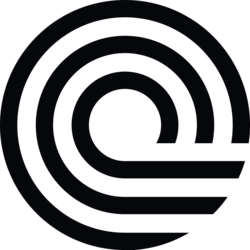Google's Material 3 Expressive design language is set to bring a fresh new look to Wear OS in the future. The update is already making its way to Wear OS Tiles, a feature that enhances the user experience by providing quick access to important information at a glance. While the full rollout of Material 3 Expressive on Wear OS 6 is expected later this year, the early update to Tiles showcases Google's commitment to improving the overall aesthetics and functionality of its smartwatch platform.
Transition to Material 3 Expressive
The transition to Material 3 Expressive represents a significant visual overhaul for Wear OS users. This design language focuses on enhancing user interaction through smoother animations, more intuitive navigation, and a more cohesive design aesthetic overall. The update to Tiles is just the beginning of a larger transformation that will ultimately provide a more modern and streamlined experience for Wear OS users.
With Material 3 Expressive, Google aims to create a more engaging and visually appealing user interface that seamlessly integrates with the hardware capabilities of Wear OS devices. The new design language emphasizes simplicity and clarity, making it easier for users to access information and perform tasks quickly and efficiently.
Enhanced User Interaction
One of the key goals of Material 3 Expressive is to enhance user interaction on Wear OS devices. The updated Tiles feature leverages this design language to provide a more interactive and dynamic experience for users. By incorporating elements such as responsive animations and fluid transitions, Google is aiming to create a more engaging user experience that feels natural and intuitive.
Users can expect to see smoother transitions between Tiles, improved touch responsiveness, and enhanced visual feedback when interacting with their Wear OS devices. These changes not only make using the platform more enjoyable but also help users navigate their devices more easily and efficiently.
Modern Design Aesthetic
Material 3 Expressive brings a modern design aesthetic to Wear OS that is both stylish and functional. The updated Tiles feature showcases this aesthetic by incorporating vibrant colors, clean typography, and contemporary design elements that give the platform a fresh and modern look.
By embracing a modern design aesthetic, Google is able to create a more cohesive and visually pleasing user experience on Wear OS. The combination of bold colors, smooth animations, and sleek typography gives the platform a polished and sophisticated feel that is sure to resonate with users.
Improved Accessibility and Usability
Accessibility and usability are key focal points of the Material 3 Expressive design language, and the update to Tiles on Wear OS reflects this commitment. Google has made enhancements to the accessibility features of the platform, making it easier for users with disabilities to interact with and navigate their devices.
Additionally, the updated Tiles feature improves usability by providing users with quick access to essential information and functions right from their watch face. This streamlined approach to interaction makes it easier for users to manage notifications, check the weather, track fitness goals, and more, all without having to navigate through multiple screens.
Seamless Integration with Wear OS Devices
Material 3 Expressive is designed to seamlessly integrate with the hardware capabilities of Wear OS devices, providing a cohesive and unified user experience. The updated Tiles feature leverages this integration to ensure that users can easily access and interact with information on their smartwatches in a fluid and efficient manner.
By optimizing the user interface for Wear OS devices, Google is able to deliver a consistent and reliable user experience across a wide range of smartwatches. Whether users are accessing Tiles on a round or square display, they can expect a seamless and intuitive interaction that is tailored to their specific device.
Future Implications and Expectations
As Google continues to roll out Material 3 Expressive on Wear OS, users can expect to see further enhancements to the platform's design and functionality. The future implications of this update are vast, with potential improvements to notifications, health tracking features, and more in the pipeline.
Overall, the early debut of Material 3 Expressive on Wear OS Tiles gives users a glimpse into the exciting changes that are coming to the platform. By focusing on user interaction, modern design aesthetics, accessibility, and seamless integration with Wear OS devices, Google is setting the stage for a more polished and user-friendly smartwatch experience.
If you have any questions, please don't hesitate to Contact Us
Back to Technology News















































